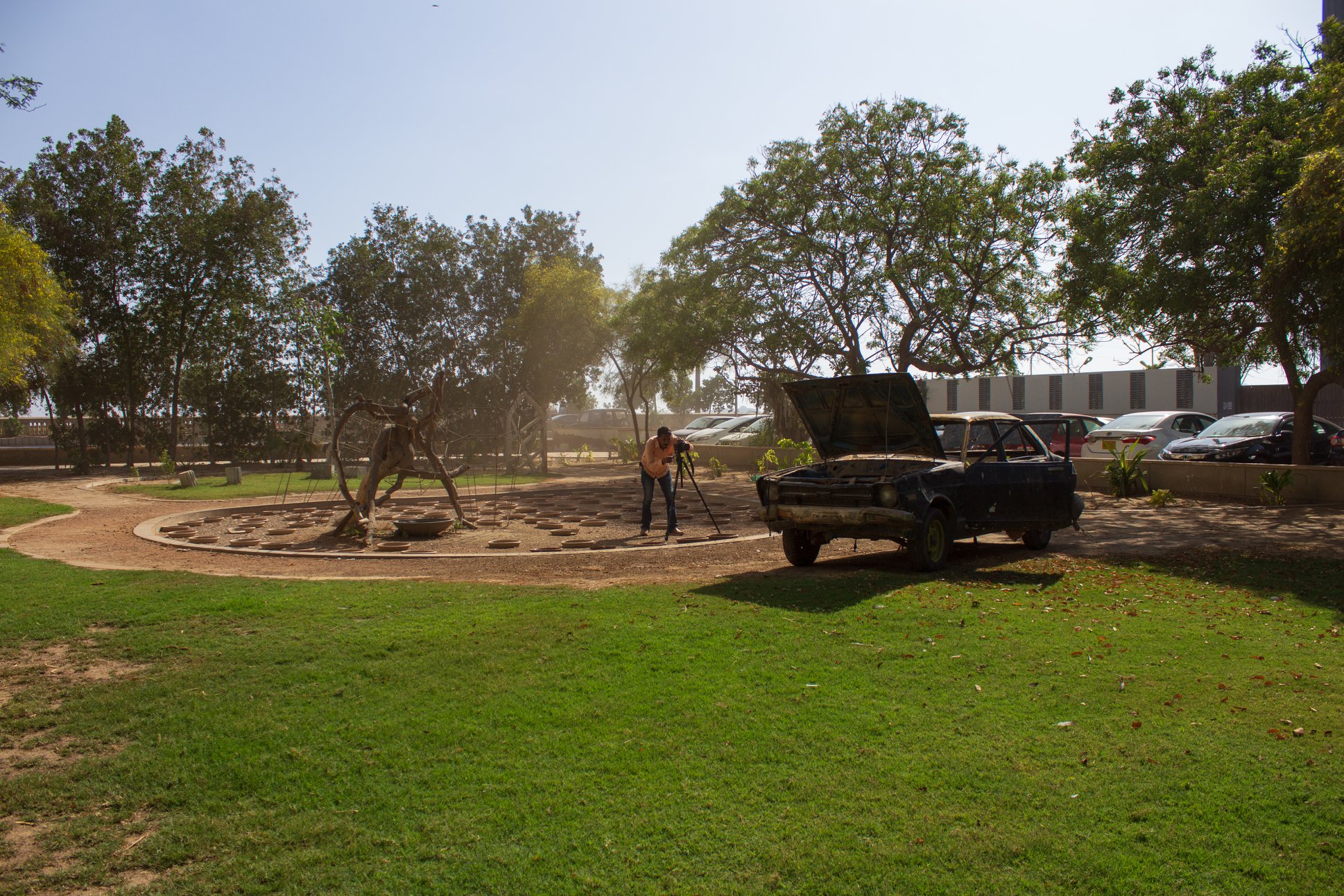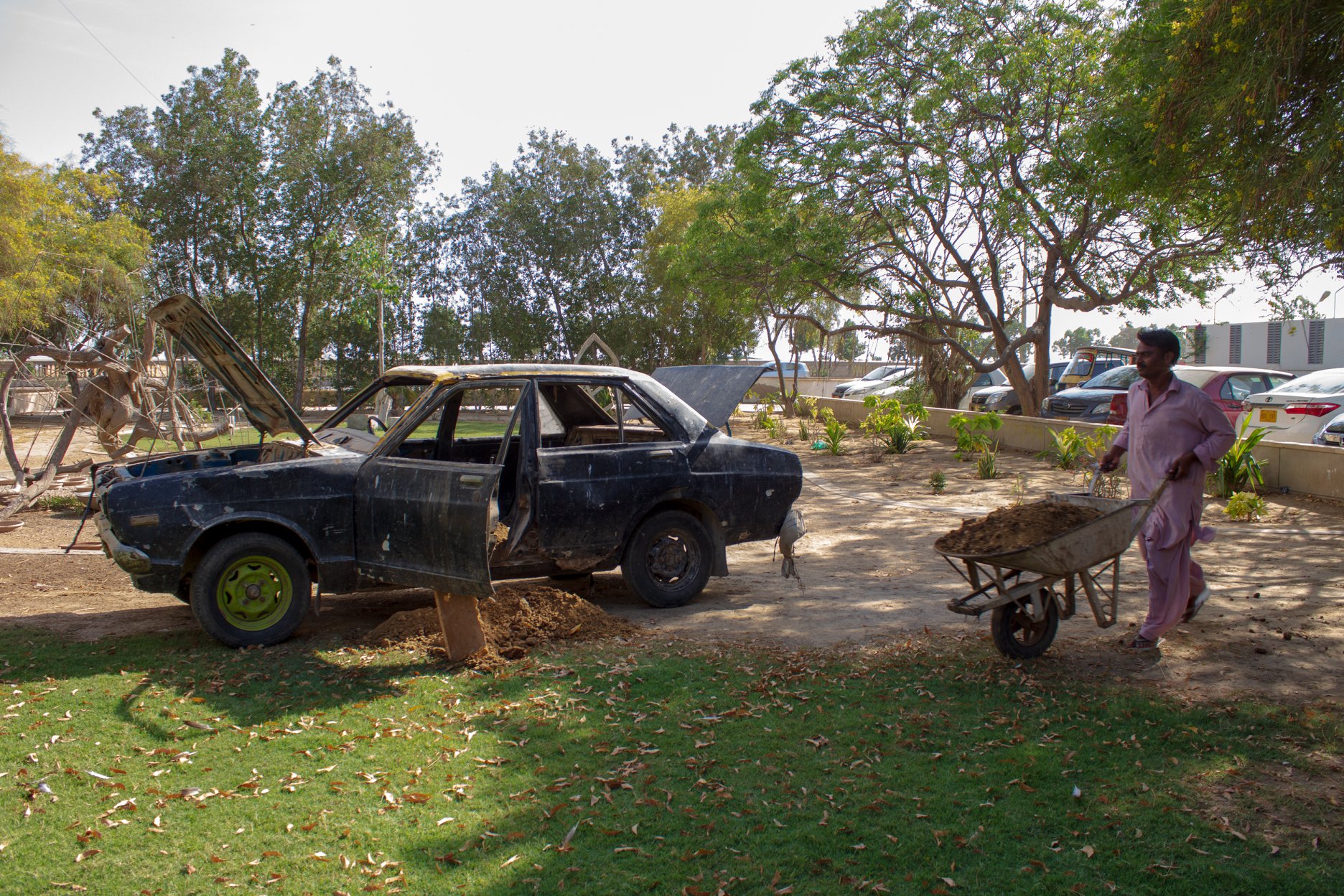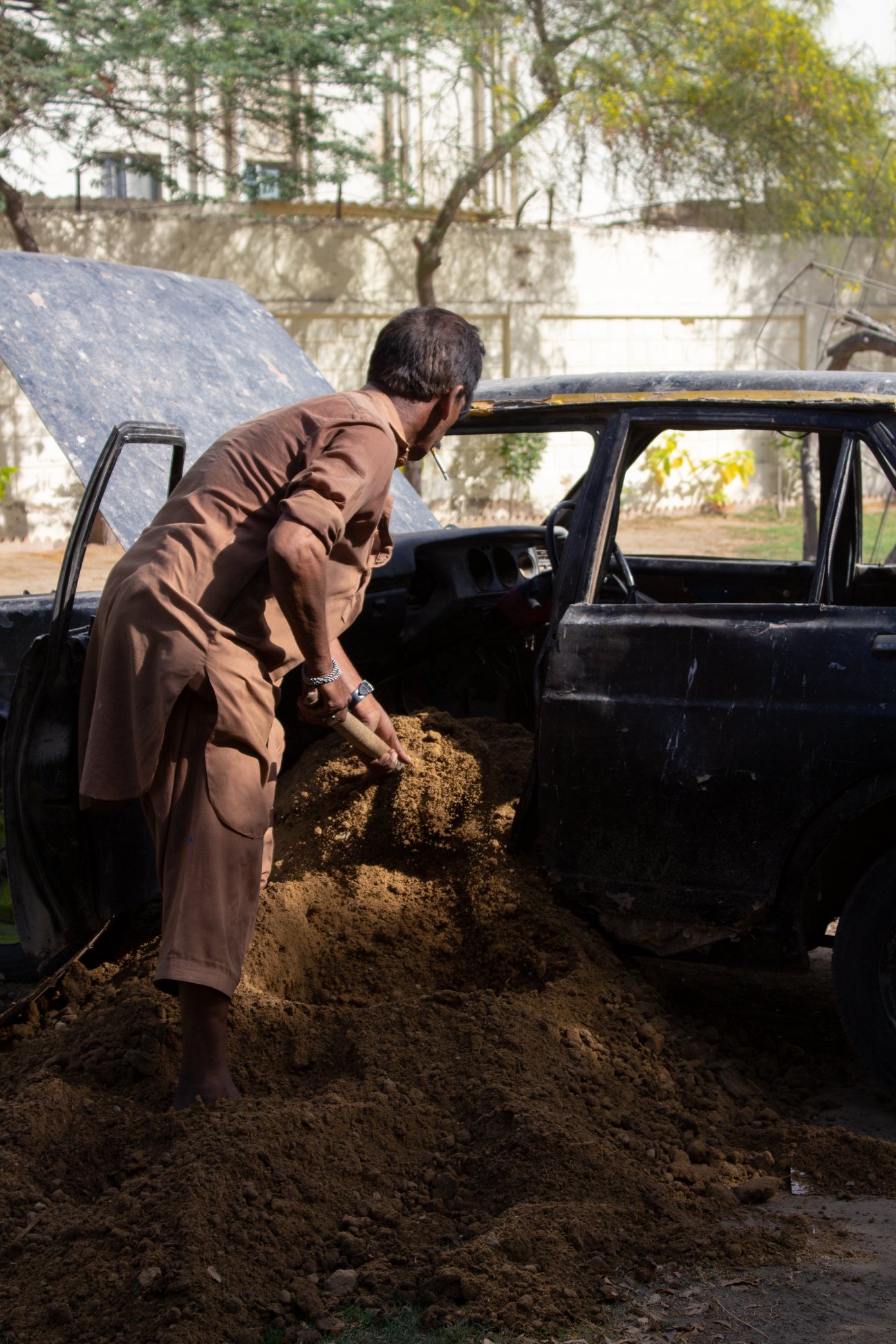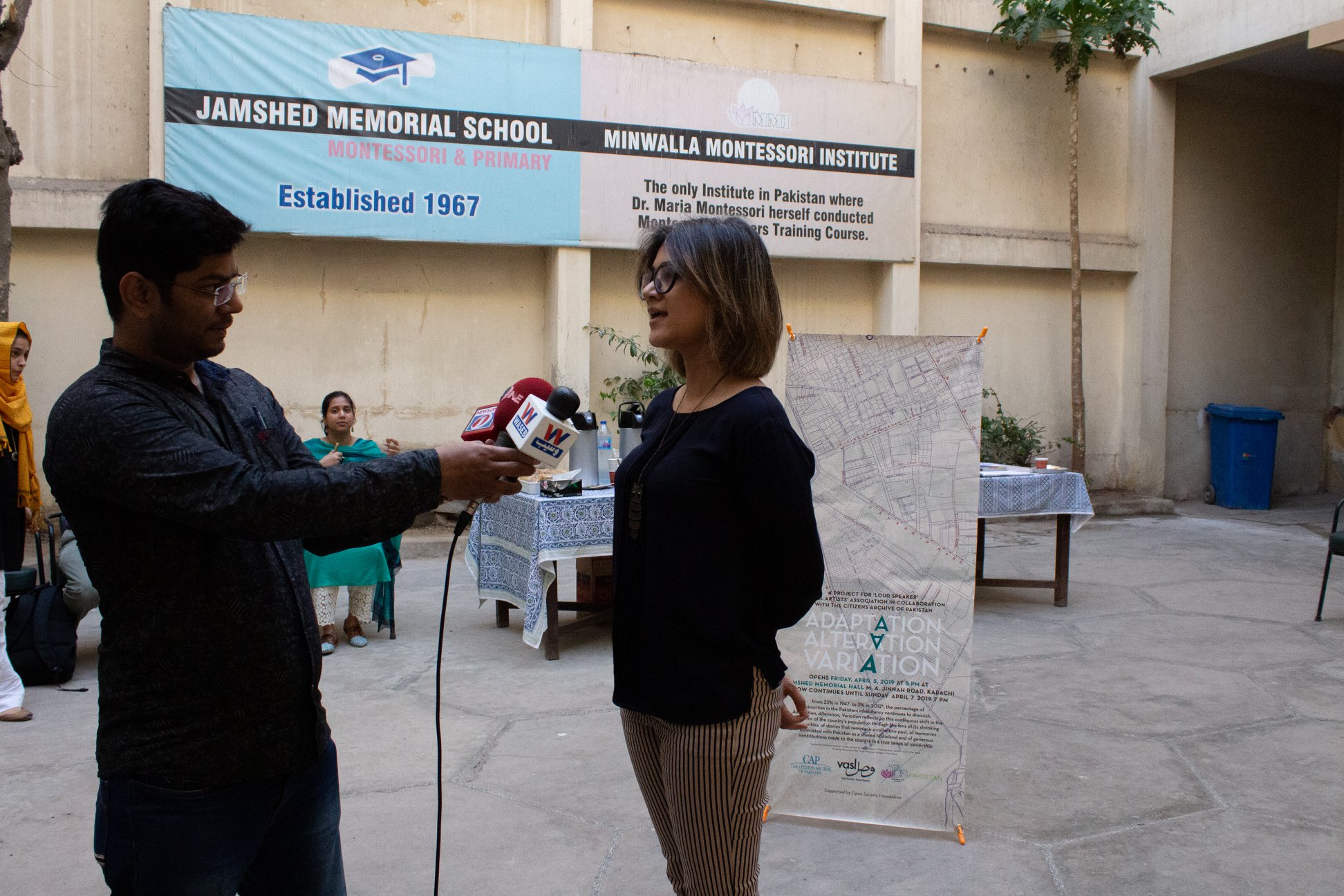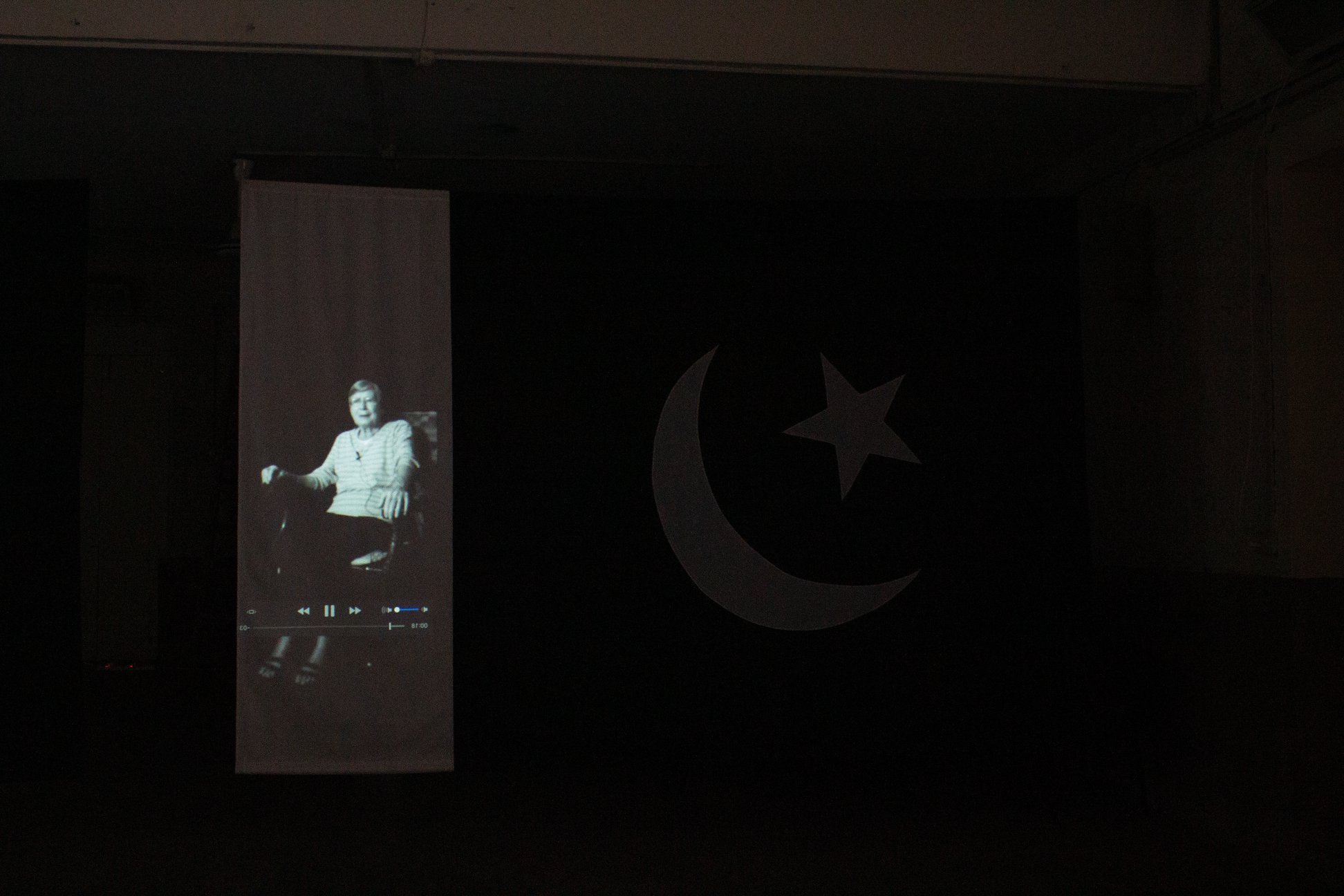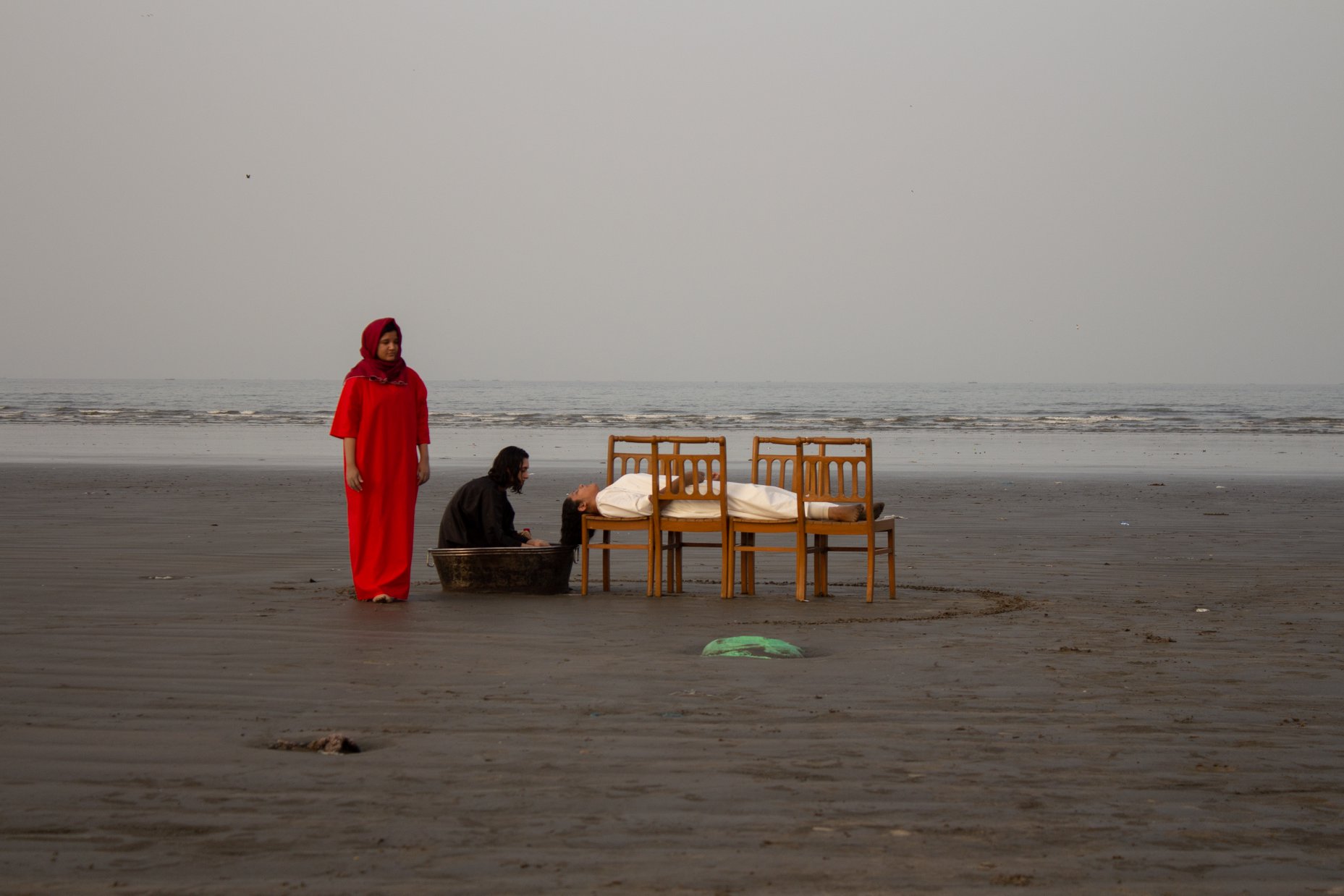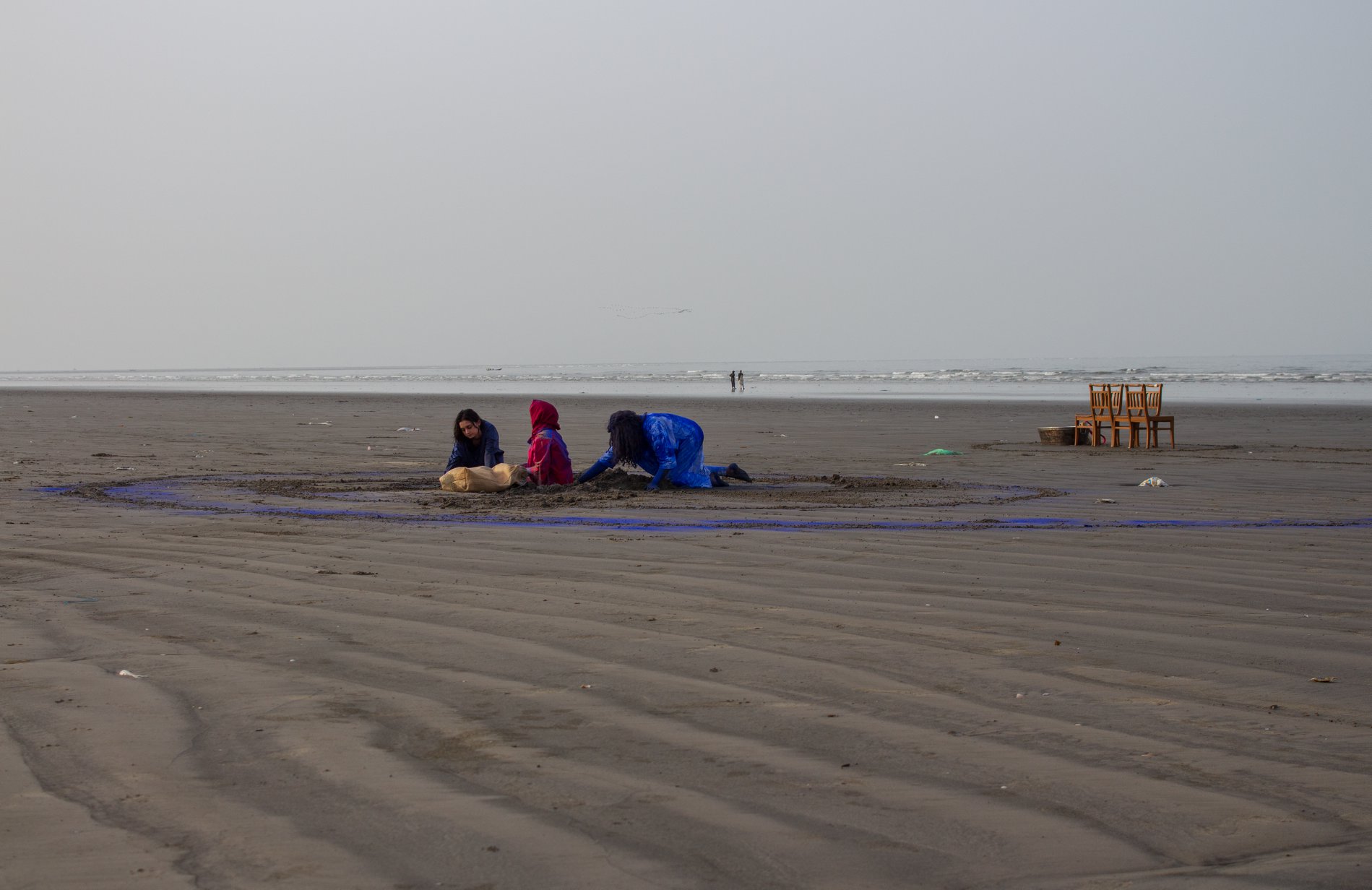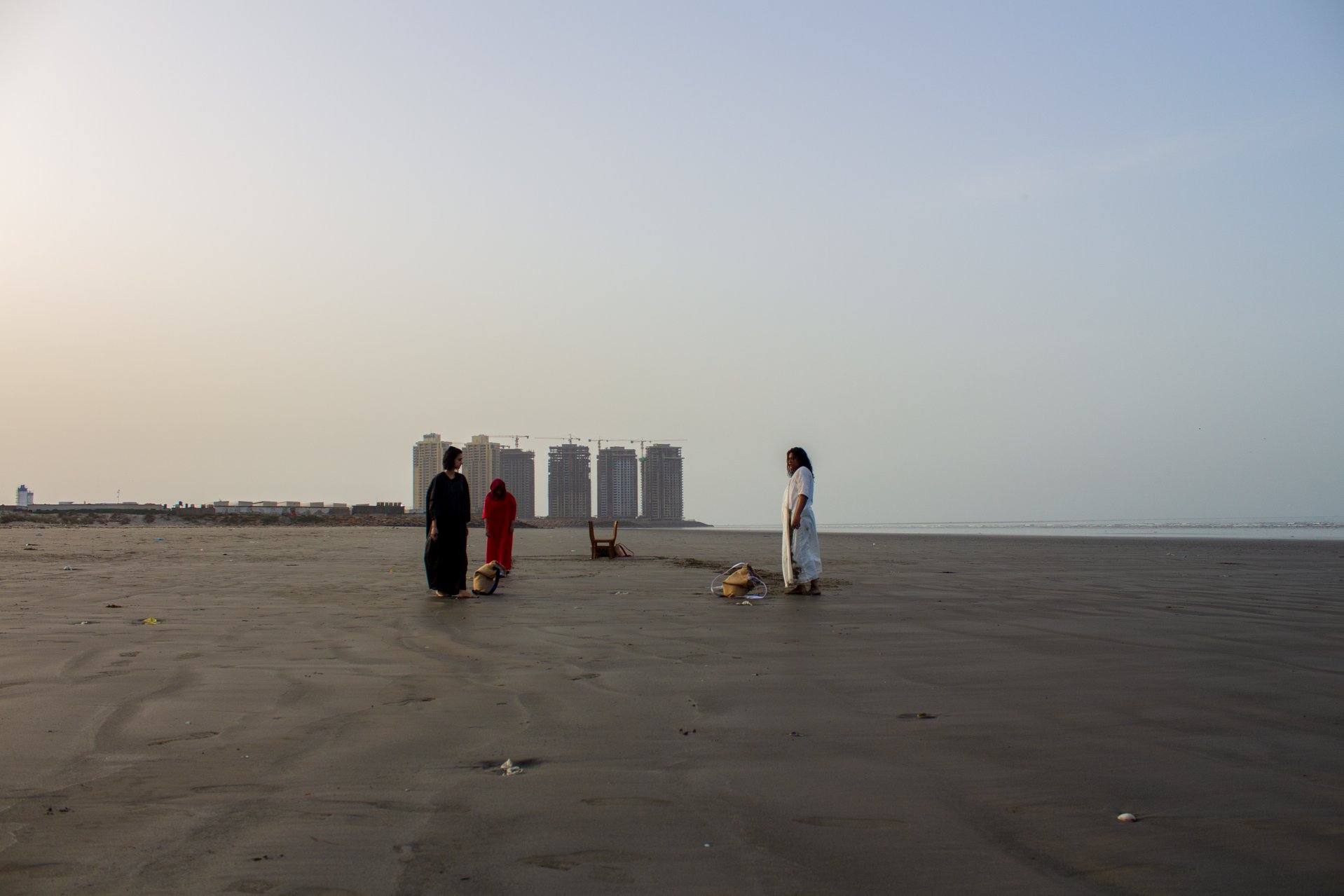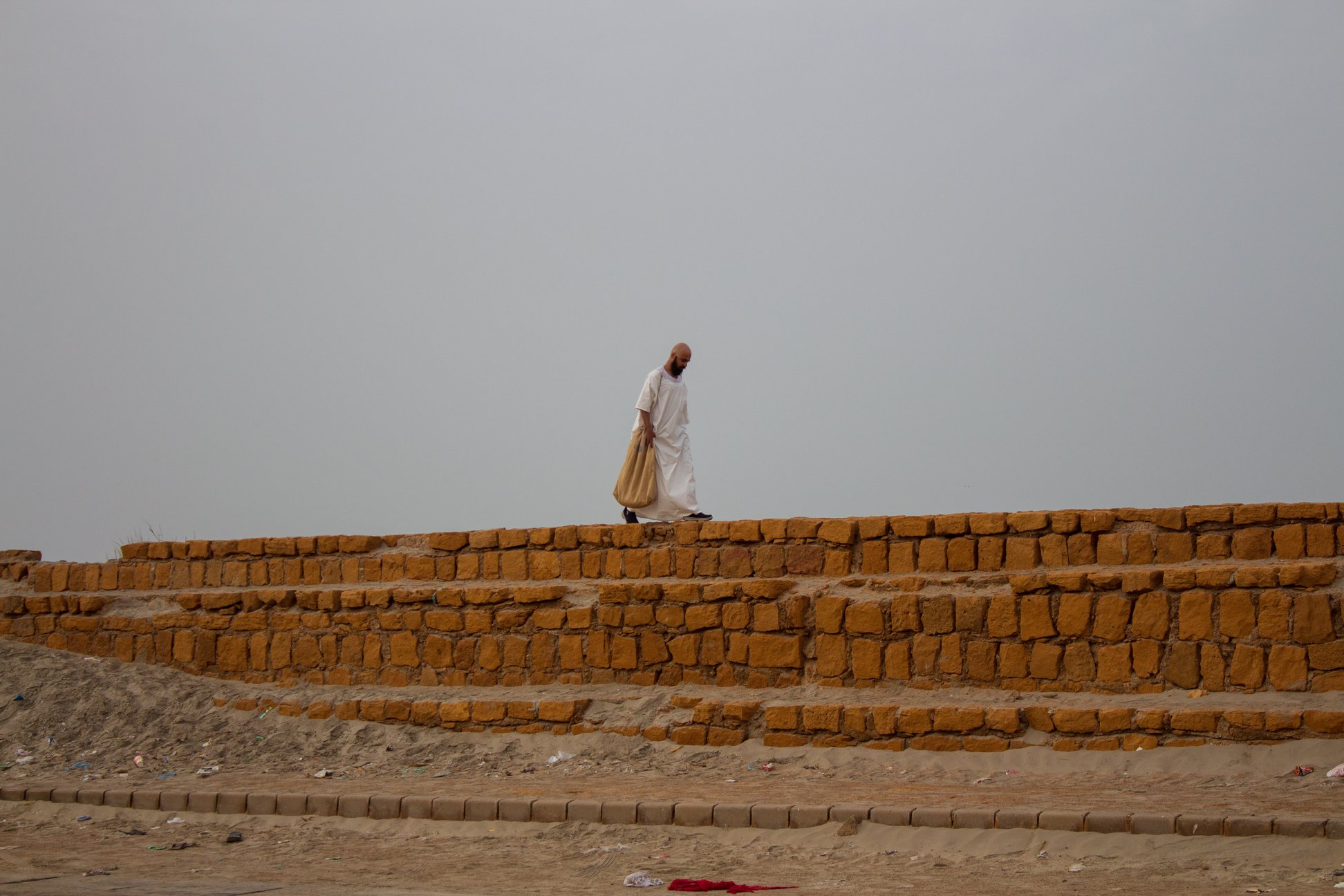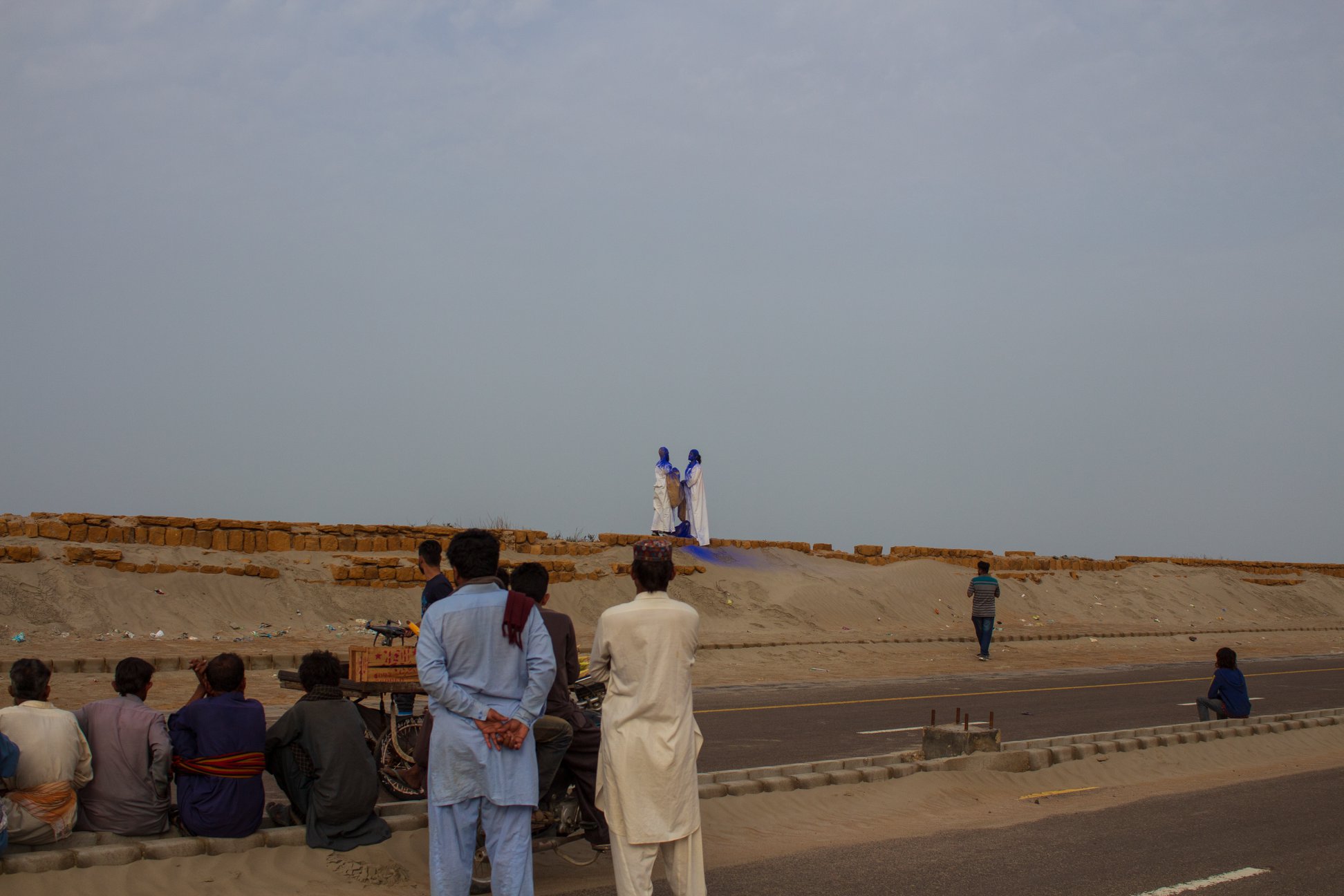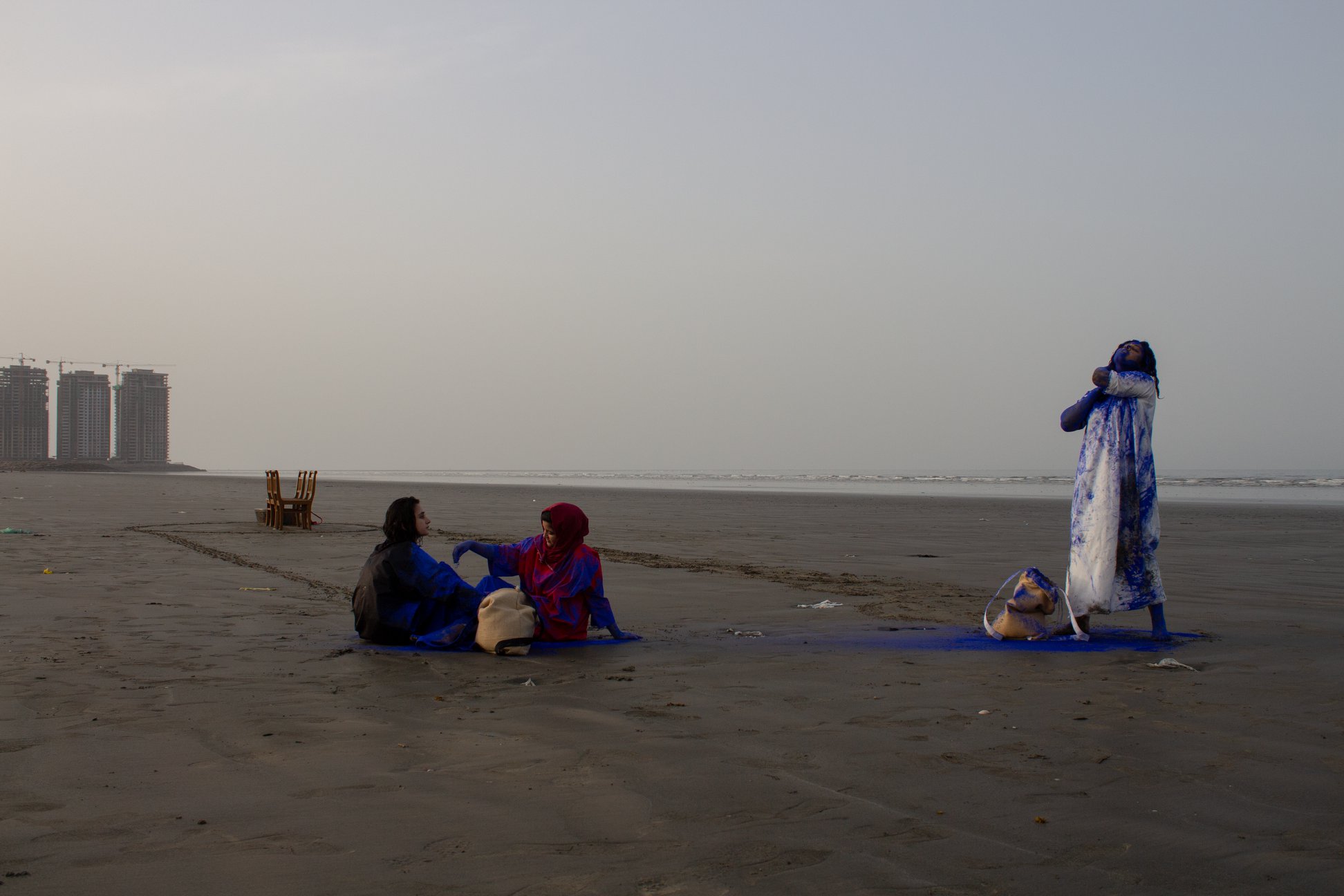Arts and humanities are parallel narratives that generate critical collective discourse. In Pakistan, these can play an important role in highlighting social issues (vulnerabilities) and generating dialogues. Vasl Artists’ Association in collaboration with Open Society Foundations (OSF) invited artists from all disciplines to share proposals to research and execute fully funded public art projects.
2019
The Hazaras
Documentary Film Screening
August 6, 2019
Bussiness Executive Center
by Sibte Hassan Azad
This film is a reflection on the lives and culture of the Hazara Community of Pakistan, clustered largely around the border city of Quetta. There are close to a million Hazaras in Pakistan – a vulnerable ethnic and religious minority with a long history of persecution. In the last twenty years in Pakistan, besieged by anti-Shia violence, more than 4,000 Hazaras have been killed by sectarian attacks and terrorism. The Hazaras are a group of Turko-Mongol people. Their name ‘Hazara’ means thousand in Persian, derived from the Mongolian word ‘Ming’ or ‘Mingan’, originating from Chinggis Khan’s strategy of dividing his army into divisions of 10, 100, 1000 and 10,000 soldiers. During the 12th century, after the Rise of Chinggis Khan and the subsequent consolidation of the Mongolian Empire under him, the Hazaras moved along the Silk Road, with the trade and the armies, and eventually settled in Eastern Persia, what is known as modern day Afghanistan. After adopting Shia Islam, the Hazara’s Turko-Mongol relations and lineage faded through the centuries. The brutal sectarian persecution of the Hazaras began mid 19th century in Afghanistan. At that point in history, the Hazaras were the largest Afghan ethnic group constituting nearly 67 percent of the total population of Afghanistan. From the 1880s onwards, and especially during the reign of the Pashtun Amir Abdul Rahman (1880-1901), they suffered severe religious, political, social and economic persecution. Their homeland in Afghanistan’s central highlands was invaded and an estimated 60 per cent of the Hazara population was wiped out. A significant number fled to then British India, which is present day Pakistan. Hazaras speak a dialect of Dari and Farsi called ‘Hazaragi’ and have a rich, unique tradition of music and poetry. Their food, games, music and culture still reflect nomadic Mongolian lineage. The Hazaras today are among the most educated communities of Baluchistan in Pakistan, committed to education of their young men and women. In the recent past, the relentless targeted killings of Hazaras have created an acute sense of insecurity and vulnerability in the community. There is not a single Hazara family that has not lost a loved one. This has effectively ghettoized the community in two localities in Quetta’s eastern and western sides: Marriabad and Hazara Town. Over 70,000 Hazaras in Pakistan have left their homes for Australia, Europe or Malaysia, leaving behind the lives that they and their forefathers had painstakingly built.
Saat Daryaon K Paani Se Dhuli Meri Rooh
Phir Bhi Rahi Gadli
Documentary Film Screening
August 6, 2019
Business Executive Center
by Natasha Jozi
Saat Daryaon ke Paani se Dhuli Meri Rooh,
Phir bhi rahi Gadli
My soul washed after the water of seven seas
Still remain muddy
By Natasha Jozi
The body rises as the orange droplets of dew fall
It obliterates, inches its way through the crest
Picks off thousand particles one by one
It breathes
A little
MODALITIES OF THE PERFORMATIVE BODY AND THE HEIGTHENED EXPERIENCE
The performing body activates parameters that allow to perceive, ponder and react to its presence. While the body performs the relationship of the performer and the viewer initiates on multiple levels. The performer gets charged which heightens the sense of being of the body while activating the surrounding environment. The performing body exists among the dichotomies of voyeurism. Where one sees accounts of artists questioning the act of probing into the space of the other, performing body invites the other’s gaze, and often instigating a collective voyeurism.
Performance in public space manifests itself on multiple levels. Chance plays a great part in defining the parameters of engagement with the performer/performance. There is an intersection of plethora of stimuli that engages and activates the body of the performer as well the body of the viewers, intermittently charging up the space. This phenomenon manifests
itself in various degrees or modes; which I call The Modalities of the Performative Body.
What are the modalities of the performative body? Modalities can be identified as state of being of a body at a particular time for a particular duration. Through my work I have been able to identify two modalities of the performative body.
The moment of transition from a body to a performing body, creates an impact on the physical as well as psychological connection of the performer to the performance space. The first modality is that of ‘departure’ experienced by the performative body as soon as they enter into the performance space. It is the moment experienced when the performer’s self detaches from the body, elevating and often vacating the body. The moment, the body of the viewer starts looking outwardly, it enters into a third space. The third space is a psychological space experienced within the performer’s mind that charges the body to the point of numbness. This numbness impacts directly to the sensory modalities of the body cancelling out some or all physical sensations from the performative body. The third space may even create a vacuum around the performative body in such a way that positions the body of the performer becoming the ‘other’. The performative body begins to view itself as the ‘other’, looking at its own body through the eyes of the other, the voyeur. All the actions it performs during the performance are not being performed by the body, they are being performed by a body which has been vacated, and is now being predisposed to the experience, environment and the bodies of the viewers to inhabit it.
The other modality is called ‘inhabiting’. This is the moment of reaffiliation of the tangible-living body to itself. Its initiated when the performing body experiences danger, insecurity, anger, fatigue, disturbance. These bodily and psychological experiences puncture the trans-like third space and brings the body back inside the performing body combining the two bodies into one. This combination of the bodies and its intermittent relationship with the space situates and re- identifies the politics of the body in space where now the viewer positions back as the ‘other’ reinforcing the split between the performing as well as the viewers body.
Performance in a public space navigates between these modalities of the performative body. It is therefore plausible, that the materiality of the performative body acts as a highly charged tool for engagement. The materials for a performance in a public space are not but only limited
to the objects used in the performance. This exchange of energy between the performative body to itself and the performative body to the viewer act as active materials for the experience.
The exchange of energies in the moment of time and nature of the location dictates the course of the performative experience and the modalities of the performative bodies. The nature of this relationship that the performative body creates with its being, the third space and the materials of the performance get defined, negotiated and re-negotiated throughout the
performance.
While the myth of the need for preparation of the performance often dictates a very scripted performance, the scope and experience of a performance can never be possibly outlined or rehearsed. This remains true not just for the nature of the engagement, but also the modalities of the performative body. Time and space within which the performance happens provides sufficient charge to guide and inform the course of the performance and allows for an experience that cannot be predicted or rehearsed for entirely.
It is charged moments during a performance where the reality of the experience gets redefined into hyper-reality, heightening the perception of every sensory experience of the body. It amplifies the presence of the viewer’s body, intensifying their energy as it comes into contact tangibly or intangibly with the performers body. It is due to this exchange of energy and the intensification of perception that the presence and intermittently the gaze of the viewer functions on a heightened psychological level. The body of the performer becomes the fulcrum of energy, perception and experience, and the phenomena of the third space.
Performance is a trans-like experience, meditative, perplexing, and often hallucinatory. It allows for the performative body to perform actions that it may not be able to perform otherwise in reality. It may also elude time and space, pushing the limits to perform at a stretch for a longer duration of time and react to stimuli unpredictably.
The extent and parameters of a performative body cannot be mapped as it allows to cultivate a space of chance, risk and urge. The exchange of experience that happens at the moment of contact can never be fully quantified, reproduced or shared, it can only be experienced.
Momentarily.
The Throwaway Culture
Public Art Project
April 30, 2019
IVS Sculpture Park
by Muhammad Noman Siddiqui
supported by Indus Valley School of Art & Architecture
Vasl extended it’s public art project Loud Speaker to the IVS Sculpture park with the support of the Indus Valley School of Art and Architecture. Muhammad Noman Siddiqui is a Karachi based multidisciplinary artist, graduated from the Central Institute of Art and Craft, Karachi in 2005. For this project, Noman studied his surroundings and documented various automobiles which had been discarded on the road sides around the city. Their burnt, rusted, and dysfunctional states made Noman rethink what could be the ‘best out of waste’ situation for these abandoned cars. Currently, towed and stationed at the IVS Sculpture Park, an old Mazda Taxi is being revitalised as an oasis with various trees and plants patent to the city.
Adaptation | Alteration | Variation
Public Art Project
April 5, 2019
Jamshed Memorial Hall
in collaboration with Citizens Archive of Pakistan (CAP)
assisted by Asim Mohammad Ameen & Tooba Shahbaz
From 23% in 1947, to 3% in 2012*, the percentage of minorities in the Pakistani inhabitancy continues to diminish. *Adaptation, Alteration, Variation* reflects on this continuous shift in the dynamic of the country’s population through the lens of its shrinking minorities; of stories that reminisce a collective past, of memories associated with Pakistan as a shared homeland and of generous contributions made to the country in a true sense of ownership.*quoted by Farahnaz Ispahani, media advisor to the president of Pakistan from 2008 to 2012 in her book Purifying the Land of the Pure: Pakistan’s Religious Minorities.
Saat Daryaon Se Dhuli Meri Rooh, Phir Bhi Rahi Gadli
Public Art Project
March 24, 2019
Sea View Beach
directed by Natasha Jozi & Mavera Rahim
participating artists Amna Khan, Asim Mohmmad Ameen, Maha Minhaj, Ramsha Nesar & Zoya Alina Currimbhoy
This project is a chance for participants to situate themselves in performance, space and art on an experiential level. It aims to provide a collaborative space where artists can discover what performance is and what it means in our cultural and environmental context. The concept of this project comes from a drive to re-examine our place in a constantly shifting, commodified, urban, increasingly compartmentalized lifestyle. Through reacquainting ourselves with basic elements like water, air, and sand, we look to take an internal journey and situate our body in nature. Central to our approach for this performance/workshop is the presence of the sea and our relationship as human beings to it – both literally and in terms of what the sea represents, as a reminder of the ever presence of the infinite, the unknown, the enigmatic, the holy, and the basic necessity of all-natural life. The sea is one of the most mysterious and alienated places to human beings on the earth, yet is central to all life on earth and the origin of all living beings.Just as we all came from the sea, so can we return and reinterpret our identity as human beings through engagement with our original home.
Contemporary Anxieties | The Body and Its Politics
Public Art Project
March 14, 2019
IVS Gallery
curated by Seher Naveed & Omer Wasim
participating artists Ayesha Jatoi, Ainne Muqtadir, Farooq Soomro, Nausheen Saeed, Saba Khan, Zahra Asim & Zulfikar Ali Bhutto
2018
Qissay Kahaniyaan
Public Art Project
December 13, 2018
Abdullah Haroon Vocational Training Centre, Lyari
by Zambeel Dramatic Readings
with Asma Mundrawala & Shama Askari
First performance of Loudspeaker by Zambeel Dramatic Readings in a story telling session by Asma Mundrawala and Shama Askari at Abdullah Haroon Vocational Training Centre in Lyari, Karachi.
Zambeel Dramatic Readings aims to present texts in Urdu and English rendered in their dramatised form, to create a dynamic collusion between literature and performance. Referencing traditions of storytelling and the contemporary form of the radio play, our works traverse time and geographical boundaries to interpret and enliven narratives through sound and recitation.
Asma Mundrawala
Asma Mundrawala is a visual artist and theatre practitioner with a PhD from the University of Sussex UK. She is a Professor in the Department of Fine Art at the Indus Valley School of Art and Architecture, Karachi. She has been associated with the arts and education and has been represented in national and international exhibitions. Her association with theatre began in 1997. Asma is the director and sound designer for Zambeel Dramatic Readings.
Shama Askari
Shama Askari began her acting career with the theatre group Tehrik e Niswan in Karachi. Her roles in theatre plays Insha ka Intezar, Zikr e Nashunida and Birjees Qadar Ka Kunba amongst others have earned her much acclaim. Shama has participated in theatre festivals in Pakistan and internationally. She has been a familiar face in popular television plays and has also explored the medium of film as an actor. Shama is a performer, and a valuable researcher and resource person for Zambeel Dramatic Readings.

